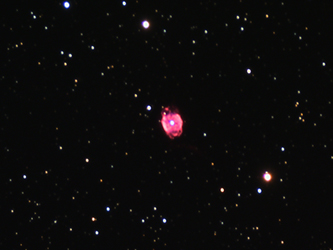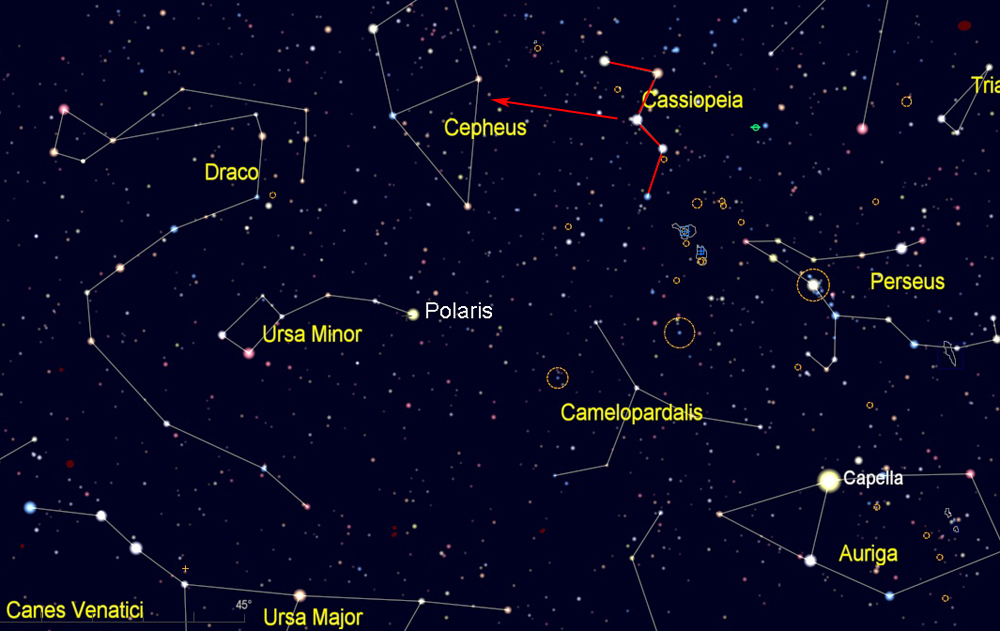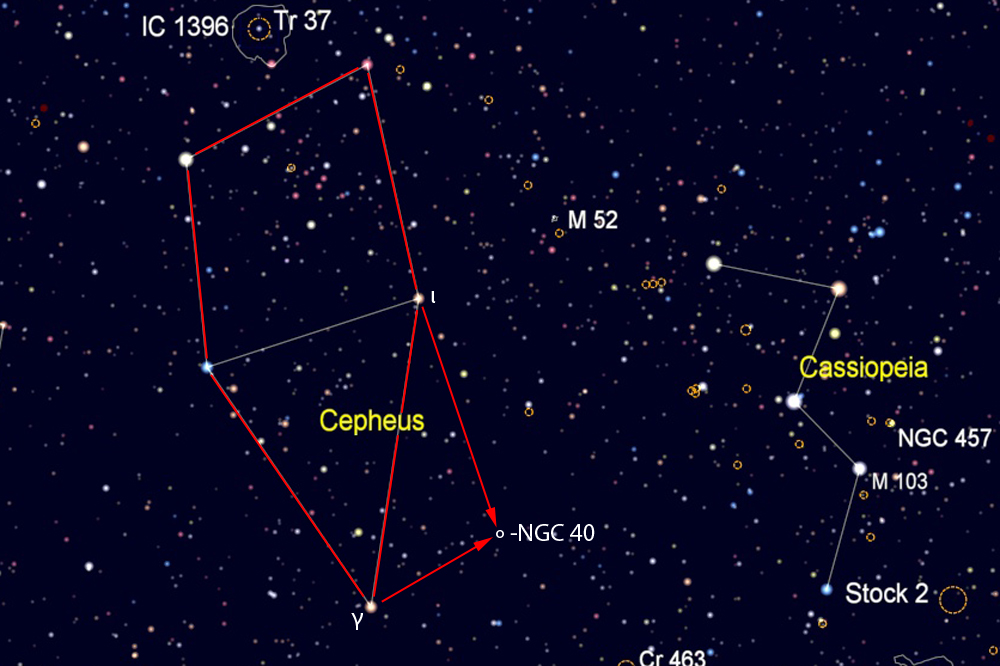
Find the constellation Cassiopeia, which has a distinctive "W" shape (although its orientation changes at different times of year as it circles the north celestial pole). On fall evenings, look for Cassiopeia in the northeast, where its tilt makes it look like a "3", and in the winter look high in the north above Polaris, where it is oriented like an "M".
As shown below, use the stars of Cassiopeia to direct you to the nearby constellation Cepheus. It has the shape of a house with a pointy roof, though the house appears upside down when Cepheus is high in the sky above Polaris.

First locate the upside-down house formed by the five brightest stars of Cepheus. The peaked roof of this house is Gamma (γ) Cephei, and the Bow Tie Nebula is about 5 degrees to the southeast. You can locate it by visualizing a right triangle with γ Cephei and Iota (ι) Cephei, as shown in the chart below.
